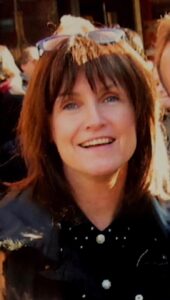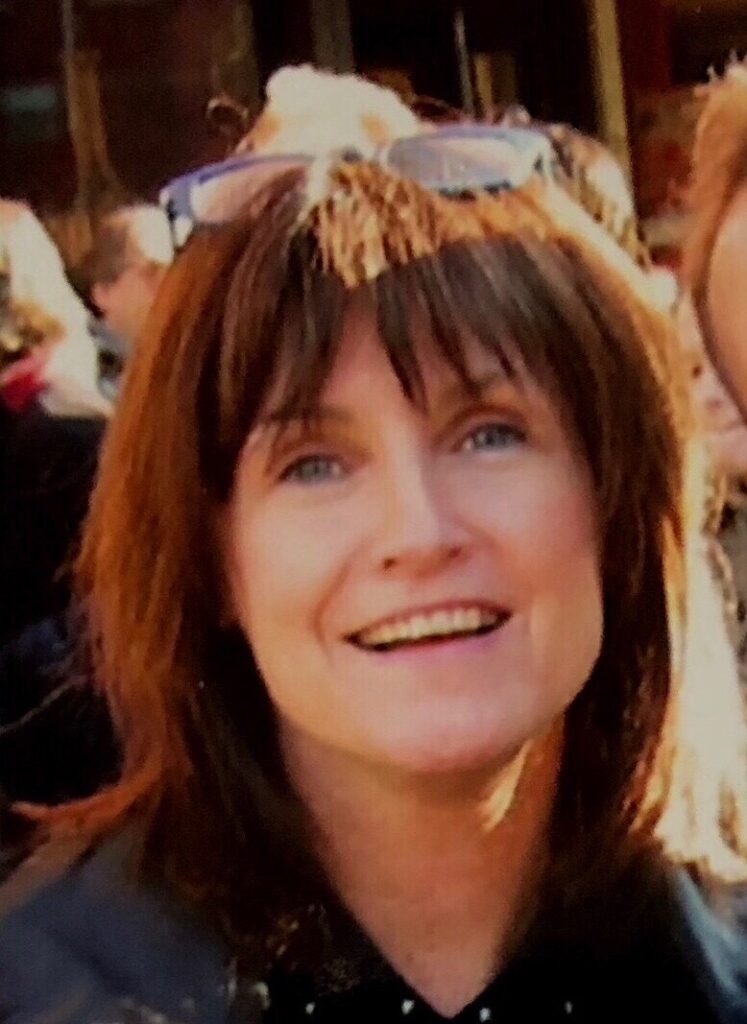
From 1973 to 1981, a shabby building off the main drag in Briarcliff Manor was home to one of the metro area’s most progressive and unconventional FM rock stations, WRNW 107.1.
The disc jockey perhaps most instrumental in giving the tiny station its cutting-edge personality was Meg Griffin, whose subsequent career at WNEW, K-Rock, WFUV and on Sirius XM Satellite Radio catapulted her into the Rock and Roll Hall of Fame.
Rock to Rubble: Howard Stern’s One-Time Studio Faces Wrecker’s Ball
Radio Days: Strong Reception – A Q&A with The Peak’s Jimmy Fink
With the station’s former home on Woodside Avenue facing demolition, The River Journal asked Griffin to look back on her years in Briarcliff. Here are excerpts from a Q&A with Griffin, which has been edited for brevity.
River Journal: What years were you at WRNW, and what were your roles there? Where were you immediately before and after?
Meg Griffin: WRNW was a glorious playhouse that enabled hopeful novice DJs to figure out who they were going to be when they grew up. I started there in May of 1975, after making a tape on the station where I did my first radio shows – at college where my plan was to be a vet. Growing up in Westchester, I had been listening to WNEW FM since my teens. That station was the eventual goal and WRNW provided a great launch pad just outside of NYC. I was given that gift after only two-and-a-half years in the suburbs on WRNW where I was on the air and music director. Scott Muni invited me onto his team at WNEW FM in December 1977.
RJ: By all accounts it was a quirky setup – cramped and not particularly well suited for a radio station. Can you describe what it was like to work there?
MG: The building housed three or four businesses, from a hair cutter to a radio station. Our “newsroom” from where we would rip copy from the AP wire machine was in a closet. And as the on-air studio was on the upper floor, you’d have to bend slightly going into the bathroom, or you’d hit your head on the ceiling that slanted along the roof line.
I was in and out of that bathroom a lot, washing vinyl records that someone had dripped pizza on as they ate lunch while on the air. Ivory soap and lots of water, by the way. Does the trick every time.
The studio had windows that opened to the back parking lot and we needed them open in the warm months as the upper floor got hot and stuffy. So there was a lot of “ambient sound,” you could say.
I believe the first interview I ever did was when the record label brought Peter Tosh up. He had broken off from Bob Marley’s band to release his own “Legalize It” album. Needless to say I was nervous. Tosh comes in and has a deep pipe going through the whole on-air visit. A summer storm was raging outside those open windows and every time a loud clap of thunder rattled the turntables, Tosh would “Thank Jah.” It was an excellent first outing for this new DJ to learn to always expect the unexpected – and be ready for a hurricane outside your window.
RJ: WRNW’s programming was free form, with the DJs digging deep into the music. Especially your show, which introduced me and many others to new wave/punk bands. And it was presented in a less commercial, more relaxed way than bigger stations like WNEW and WPLJ. How did you and your colleagues achieve this in such a low-budget setting?
MG: The beauty of WRNW when I arrived was simple. Generous walls of vinyl in two studios. A directive from program director Donald J Barnett to simply make sure to play “three new releases per hour.” That was it! The freedom was the thing that enabled me to figure out who I was on the air.
Having grown up listening to free form radio on WNEW FM, after my formative years with the excellent Top 40 on WABeatleC and WMCA, I had heard many of the best from the AM and FM dial.
I played every genre there with an emphasis on rock. Because I had pretty much lived in rooms like Max’s Kansas City in Manhattan since about 1973, I brought with me a lot of music no one had ever played there. Sure, they were all over the Eagles, but I’m spinning New York Dolls, Patti Smith, The Sex Pistols, Blondie, The Jam, the glorious “Live At CBGB’s” album. And then Joe Jackson, Elvis Costello, Nick Lowe, the whole beloved Stiff Records catalogue. At the same time, I’d include George Benson, Bolling and Rampal and Tony Bennett.
My mix then was much like what my mix today is on my show called “Meg Griffin’s diSorDer” in The LOFT on SiriusXM. And the thought that I could not create this kind of musical gumbo on the air never crossed my mind. It seemed to inspire my fellows there, too.
RJ: Was there a neighborhood joint where the DJs hung out after hours?
MG: The DJs quickly became a posse of friends. We were The Little Rascals, radio edition.
When payday came every other Friday, we’d race to the bank in Ossining to cash our $6-an-hour fortunes. We raced, because if you were the last to cash your paycheck, it would very likely bounce. Once our pockets were fat due to the $96-a-week boost, we’d hit the deli in the same shopping center and have a picnic.
One of our advertisers was a restaurant called Dudley’s. It was in a sort of antique house in Ossining and you could always find it because it had a purple front door. Some of their advertising on WRNW was paid for in trade.
We enjoyed several roundtable dinners there until I think we may have gone well over the amount we were given in trade and we couldn’t go back. I’m sure we were chastised by the owner at WRNW. And I’m sure we laughed about the attempt to discipline us.
RJ. What led to your departure from WRNW?
MG: Much to our chagrin, the station was sold to a new owner who wished “every record could sound like Steely Dan,” so you can imagine how squirmingly uncomfortable he was with what I was playing. He was a millionaire who had “flown planes and sailed boats,” as he told us and said that now, he was going to “play radio.”
Almost simultaneously, Scott Muni needed a part timer to fill in when the full time hosts took time off the air at WNEW FM. I guess I passed the audition and suddenly there I was, working alongside heroes like Scottso, Vin Scelsa, Pete Fornatale, Alison Steele, Thom Morrera, Denis Elsas – and all the cool cats like Al “Jazzbo” Collins across the hall on the Big Band side at WNEW AM.
There have been many great radio homes for me beyond WNEW FM. Among the best: PIX 102 in NYC where punk ruled alongside pioneers like Elvis and Buddy and Little Richard.
And WFUV where I had three great years alongside Rita Houston and Chuck Singleton before Sirius courted me into what has now been 20 years on satellite radio.
RJ: What did you learn at WRNW that you have carried with you as you’ve moved on to bigger stations and wider audiences?
At that little station in the woods, I learned the importance of being true to yourself. Being generous to others. Being a surprise to people when they come to visit the station because of the warm, fun experience we can make it. Do your homework. Know your stuff.
And never let anyone break you to their vision of you, because that will bring on a soul sickness that is really hard to defeat.
Oh, and when someone comes in with a Deep Pipe, remember to leave the studio windows open.
You can catch Meg on SiriusXM on these channels:
- Weekday Mornings on SiriusXM Classic Vinyl 26
- Weekday Afternoons on SiriusXM Deep Tracks 27
- Weekday Evenings on SiriusXM The BEATLES Channel 18
- Weekends on MegGriffin’s diSorDer in The LOFT / SiriusXM online 710
